The water was ink blue and we could perfectly follow the beams of sunlight down into the depths of the ocean. We were floating still, the engine was rumbling, and we were following the cue of all the seagulls that were perched on the driftwood that washed away from the storms earlier in the week. Christian spotted a green turtle poking up at the surface and catching a couple of breaths.
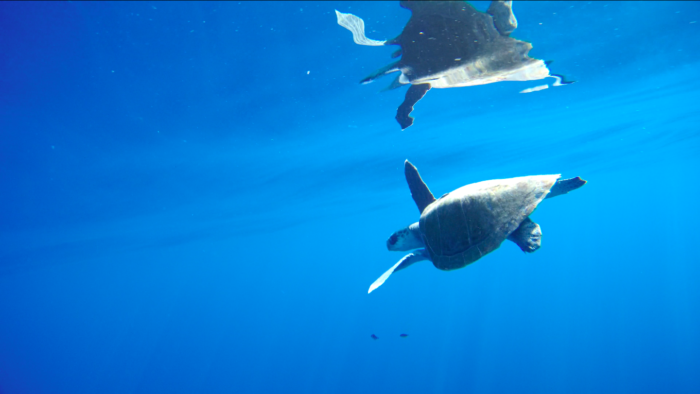
I had never been in oceanic water – the kind that is found far from shore, deprived of nutrients and boasting meters and meters of visibility. For the past two days we had seen a tropical storm pass through the coast of Ixtapa and Zihuatanejo, two popular beach towns in the state of Guerrero in Mexico. I was visiting Christian Vizl, one of the finest Mexican champs of underwater photography, who kindly accepted me into his home to learn about a special style of art, one that I like to refer to as conservation photography.
The rains usually wash all sorts of woody objects from the highlands into the ocean, which means that there are great chances for animal encounters. These driftwood pieces become floating platforms of food that attract all sorts of life in the deep blue. When we got close enough to the turtle we quickly strapped our fins on and adjusted our masks to jump into the water. One of the great tips I got from Chris was to never approach an animal from behind, as it usually startles them and they immediately end up swimming away. Instead, the best way to get a close encounter with an aquatic creature is to slowly ease into the moment. Let it see you and acknowledge you, as you acknowledge it as well. This way you can read its behavior and tap into the photographic opportunity.
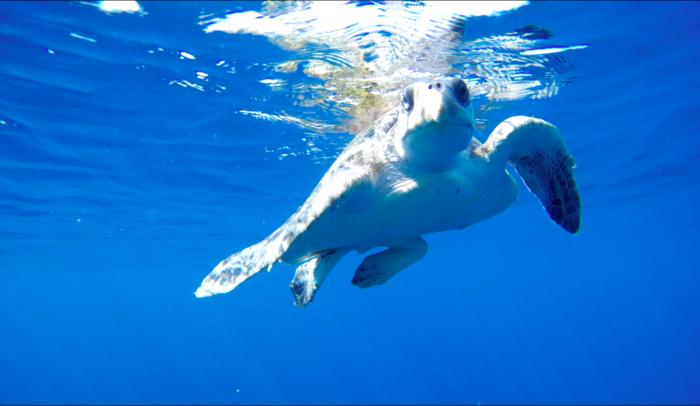
To my surprise, this turtle was extremely patient and allowed me to get really close. But instead of grabbing the camera and instantly start shooting away I let the turtle get used to me and I simply stood back enjoying the moment. Once I was comfortable enough to pull the camera out and continue engaging with this animal, I started filming. This was the longest encounter I have ever had with a sea turtle, and following it into the blue without any reference of space despite the meters of visibility made it feel immensely intimate.

Photography is a medium that can allow you to enjoy strong connections to marine life when you let it become an experience and stop exercising it as an automatic reflex. I think this is one of the keys to conservation photography. Aside from sharing much of his knowledge and expertise, Christian patiently walked me through parts of my camera gear I didn’t even know existed. We spent a while talking about different photographers and discussing conservation objectives, making the experience a whole lot richer.
To add to the experience, we were also visited by Gabriela Reyes Fuchs, an emerging documentarist who has an interesting project called Dead Soon which explores the theme of the human connection to the universe through photography, particularly questioning what happens cosmically beyond death. Gabriela gave me a ton of tips on how to document activities to keep a record of daily activities and reflections. Spending time with these two camera people was definitely what I needed to get back on track with my own photography path. We spent most nights watching other documentaries and critiquing each other’s work.

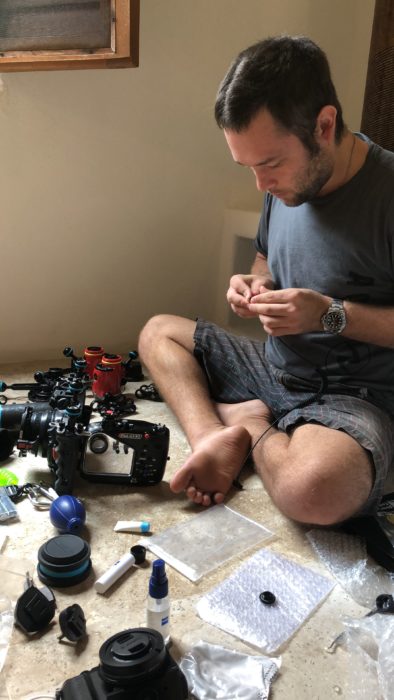
The week went by fast when I soon found myself boarding a plane to Mexico’s Northern border to catch a bus down to Ensenada, one of Mexico’s most iconic oceanographic hubs. Here I met up with Dr. Rodrigo Beas, one of the lead investigators of the MexCal project. MexCal aims to fill in information gaps that span the coast of San Diego all the way down to Natividad Island on the Mexican Pacific. Beas works together with a bunch of ‘mexcalitos’, students from the Universidad Autónoma de Baja California that take on the responsibility of monitoring the coastline and performing ecosystem baseline surveys to gather more information on the kelp forests that grow along the coast. These students work hard, oftentimes taking on roles and responsibilities during the fieldwork process that demand intensive labor and logistics. But under direction of the MexCal team, they have been able to compile a bunch of data that would otherwise be nonexistent.
As a volunteer diver, I got to see MexCal in action. We did several surveys around the entire bay of Todos Santos, and even went off to the islands in front to gather data on the kelp forests that are more exposed to the Pacific. Conditions can be quite challenging in these forests, with swells that can swirl you around like a washing machine. These same conditions are responsible for some of the most demanding waves that surfers from around the world come to conquer – waves that average around 15m heights and require special boat services to reach as there is no way to swim to these killer beasts.
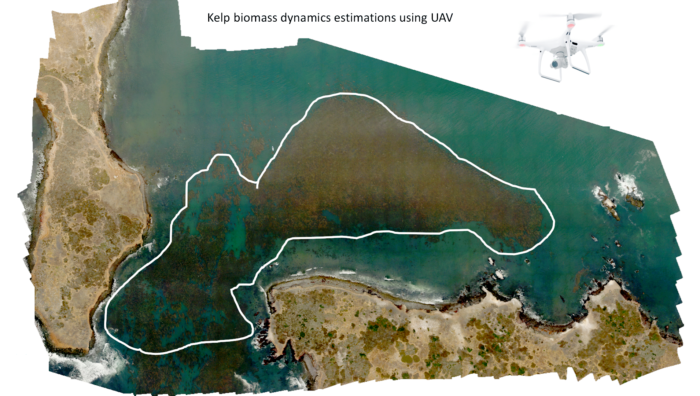
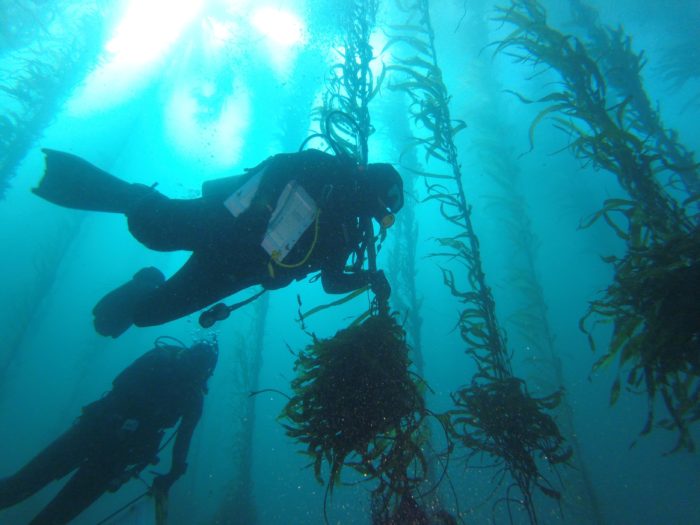
We ventured off to the fishing port of Santo Tomás, a site seldom explored by scientists that showed signs of strong resilience to physical disturbance when seen through a time-series of satellite imagery. The kelp forests here were big, with a rich diversity of invertebrates below. I saw the most bizarre nudibranchs that showed their beautiful colored armors while clinging on to the rocks in the current. I attempted numerous times to document these critters but the dynamic conditions made it almost impossible to get a crisp shot.
My visit to Ensenada was short as I found myself rushing to say goodbye half-way through our fieldwork to make it in time for a flight that was awaiting me across the border to a land much colder and rainier in Washington DC. But the immense teamwork of MexCal left me with a warm feeling for cooperation and got me excited to see the results of their hard-working efforts. Hopefully I can make it back in a year’s time to the Western Society of Naturalist’s 100th conference, which will be held in-house with MexCal as one of the principal hosts. Looking forward to working with these kids in the future!
Meanwhile, it’s time to put my hood on and zip up my jacket– onward to my next stop.
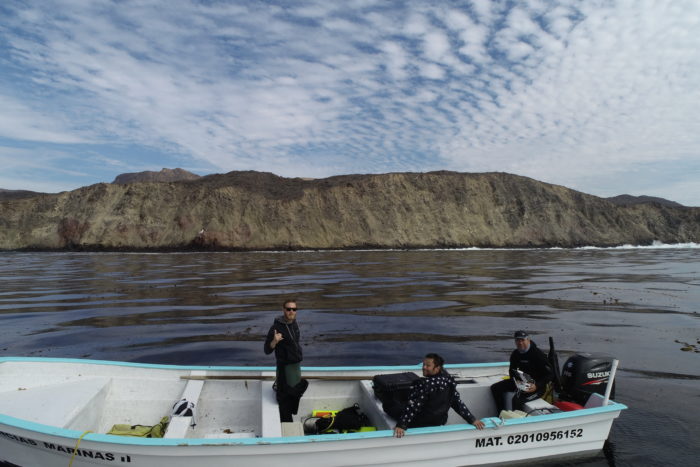

Big thanks to my awesome sponsors!